Besan ka puda is a dish from India and popular for breakfast. It is a kind of spiced pancake made with chickpea flour (“besan” / “gram flour”). It can be prepared in many different ways, both in terms of seasoning and ingredients.
Here we show how few it takes to prepare a healthy and delicious dish with a stunning variety of flavours. Without special techniques and in a short time.
Chickpea flour is high in in protein and gluten-free. It is also easy to prepare a vegan Besan ka puda.
And as if that wasn’t enough: children love it.
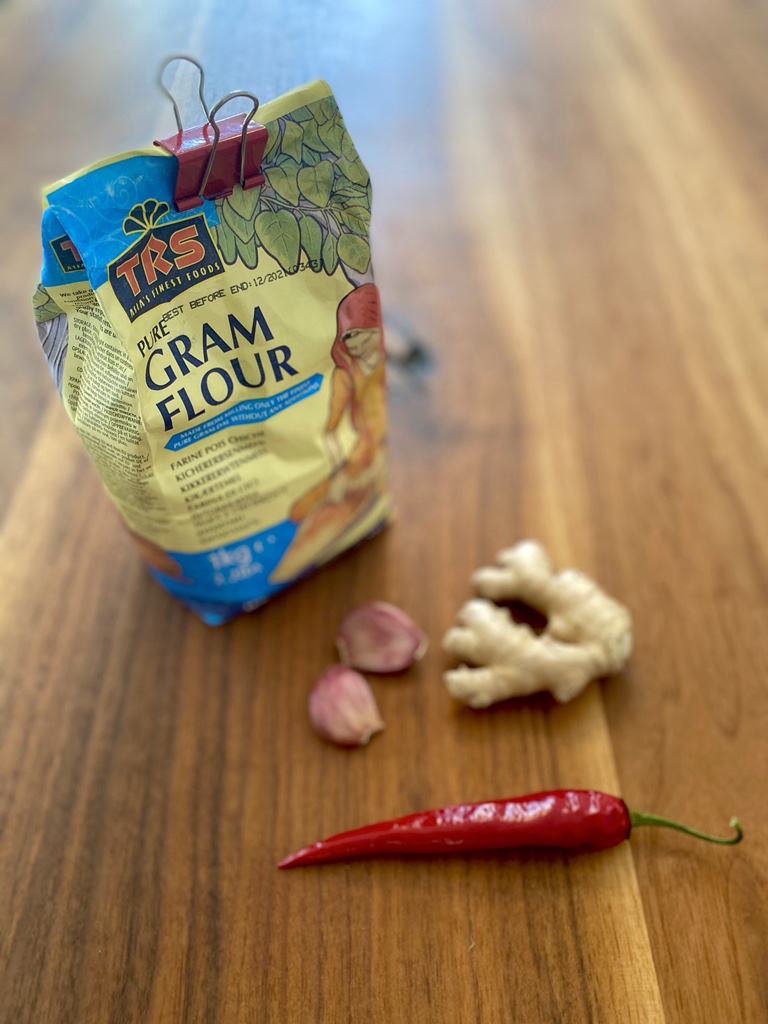
These few and simple ingredients would already be sufficient, but let’s add some leftover veggies as well.

We need a chopping board and a knife. It gets more refined with a grater, but that is completely optional. We love our Japanese “oroshiki”, so we use it.
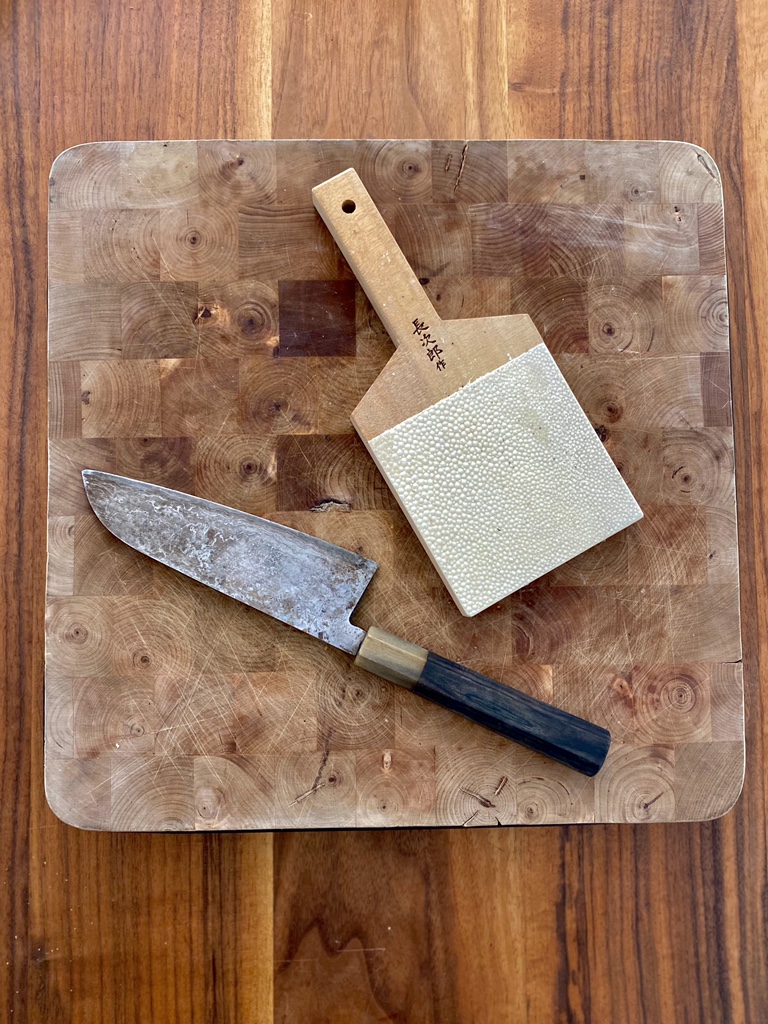
About 160 g of Besan make two pudas. A good amount for breakfast for two moderate eaters or one 16-year-old boy (who had his last meal half an hour ago).
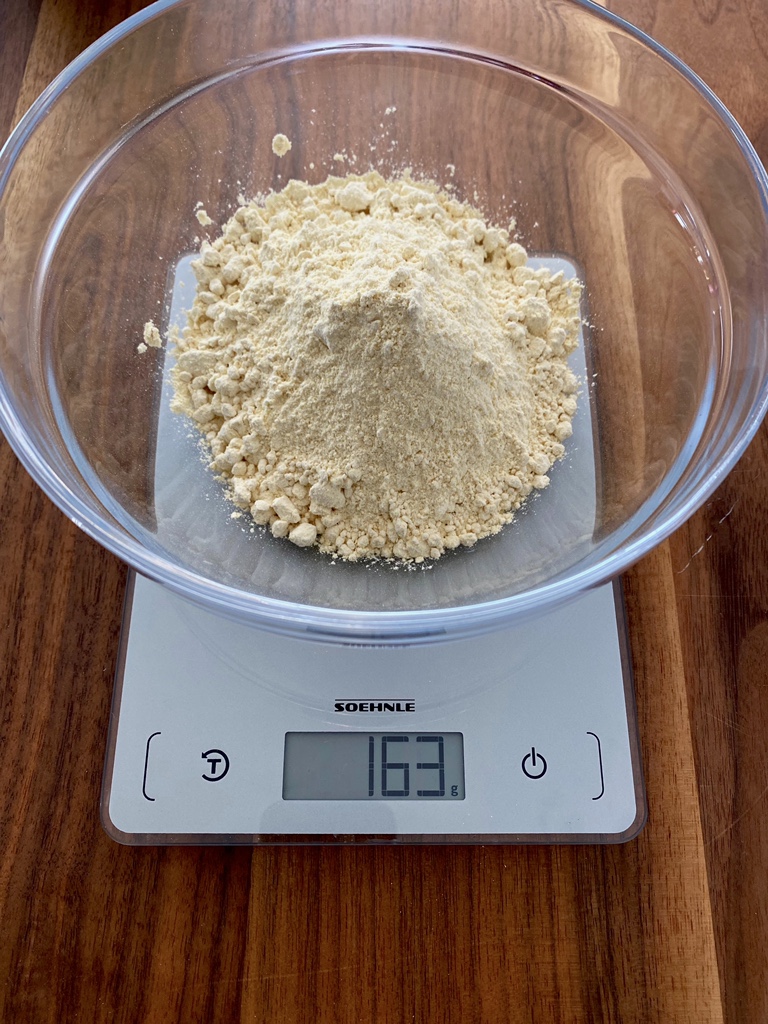
Now it’s time to add spices.
We opt for a typical Indian mix and use about a level teaspoon each of salt, ground turmeric, cumin, coriander and mild Kashmiri chili.
Cumin seeds, fennel seeds and/or mustard seeds also go very well, but when using whole seeds in Indian cuisine you should sauté them in the oil or ghee for maybe ten seconds before you add the mixture. Or skip the chili and add black pepper. Or use Garam Masala. Just feel free to experiment.
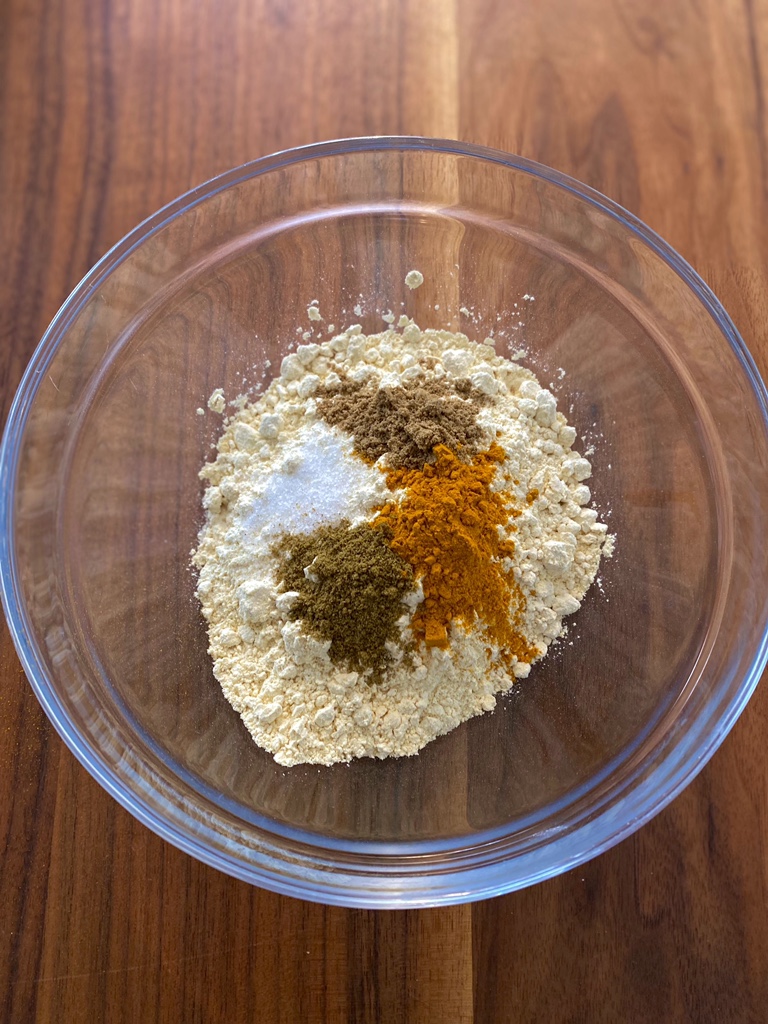
Wash the spring onions, cut off the roots and, if necessary, peel off the outer skin. The easiest way to do this is with your fingers. We also remove the wilted part of the greens. Then chop them the way you like.
Pro tip: Don’t throw away the cuttings from the vegetables – just keep them in the fridge. You can easily make the best vegetable stock from them.
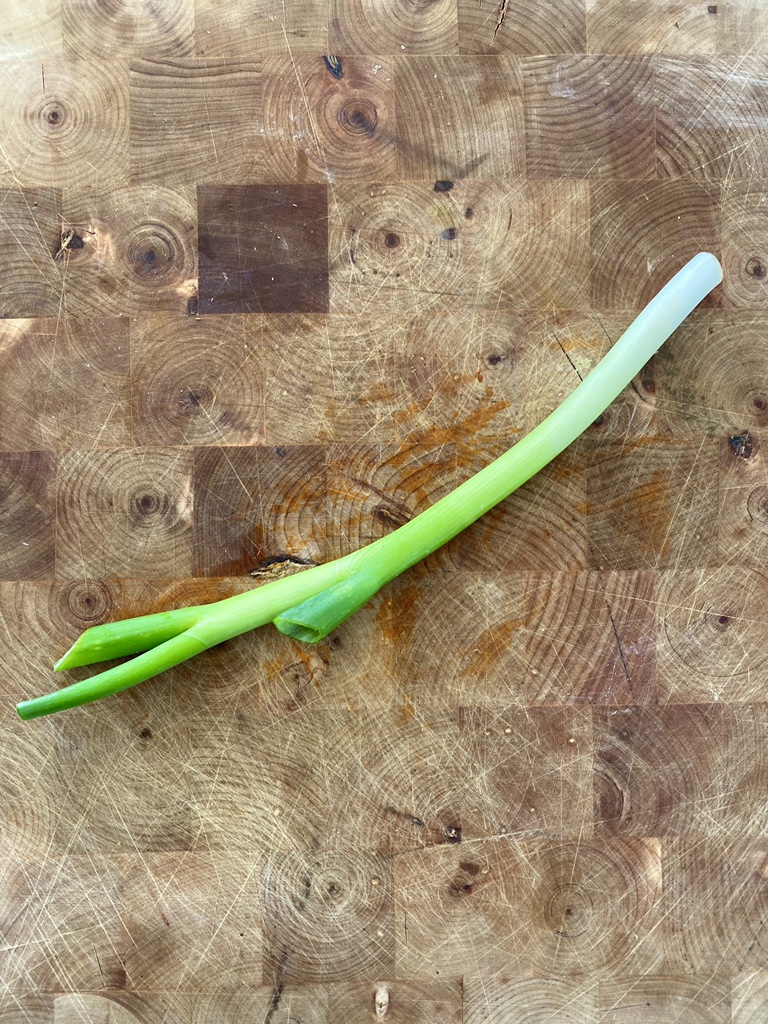
Cut the peppers in half so you can remove the seeds, they are often excessively hot and not always pleasant to eat. Just scrape them off with the back of your knife.
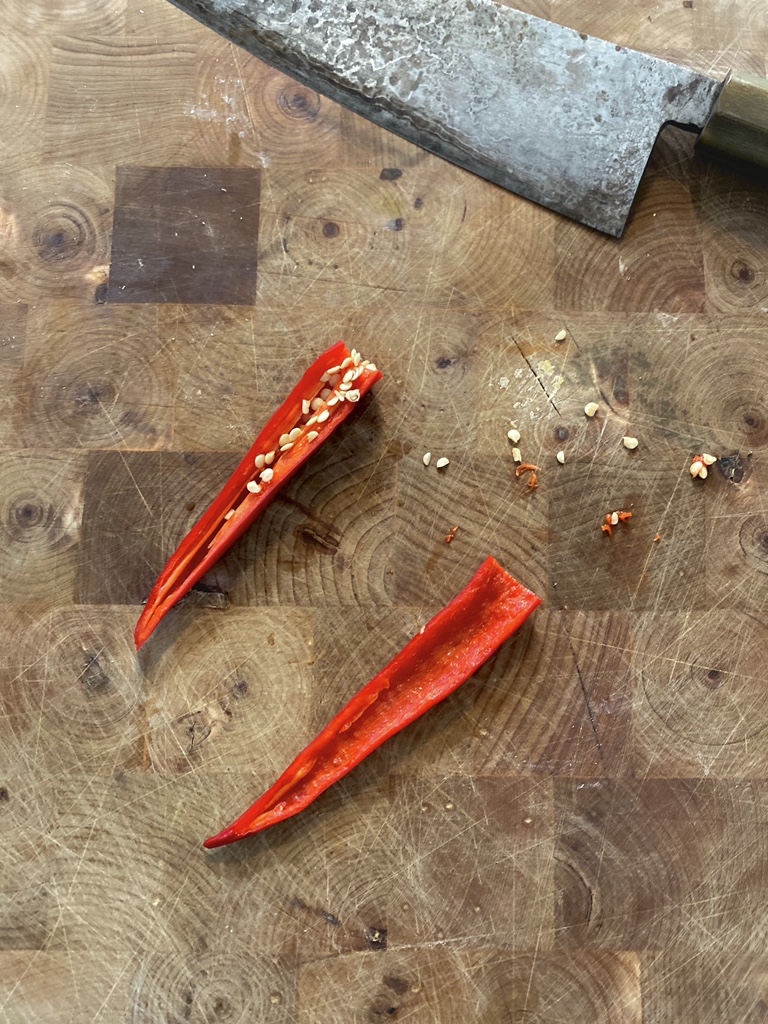
That already looks very beautiful, doesn’t it?
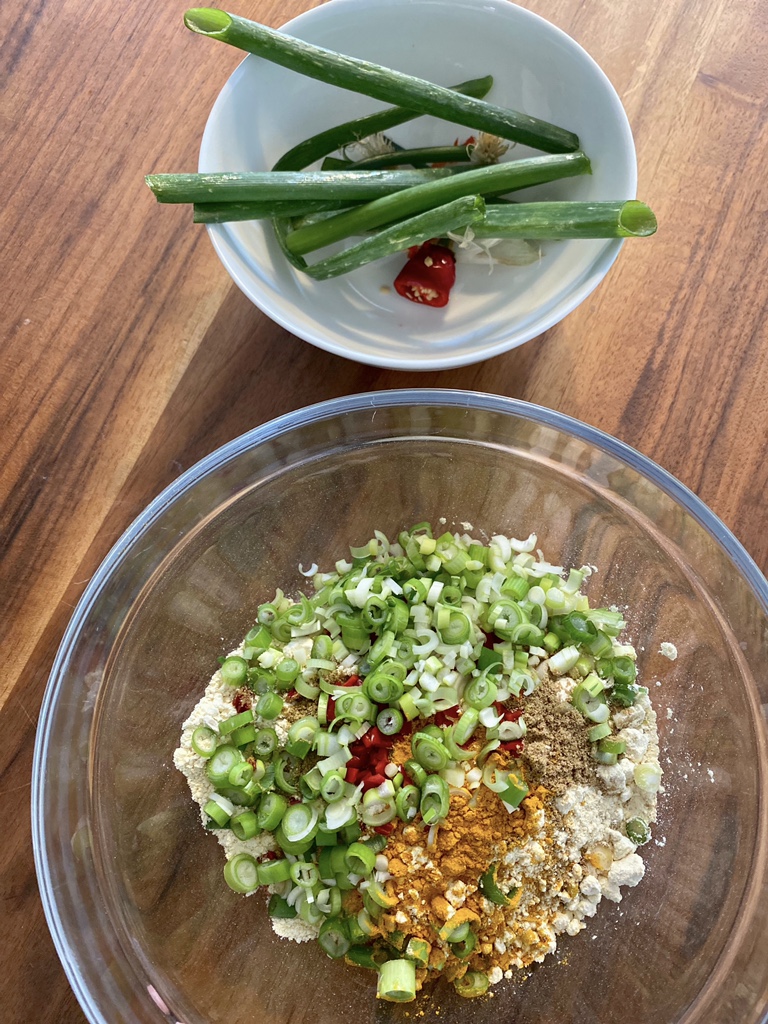
We like it a little more refined and quarter our tomatoes so that we can remove the seeds and the watery mass around them. If you use too many whole tomatoes, the dish could become soggy.
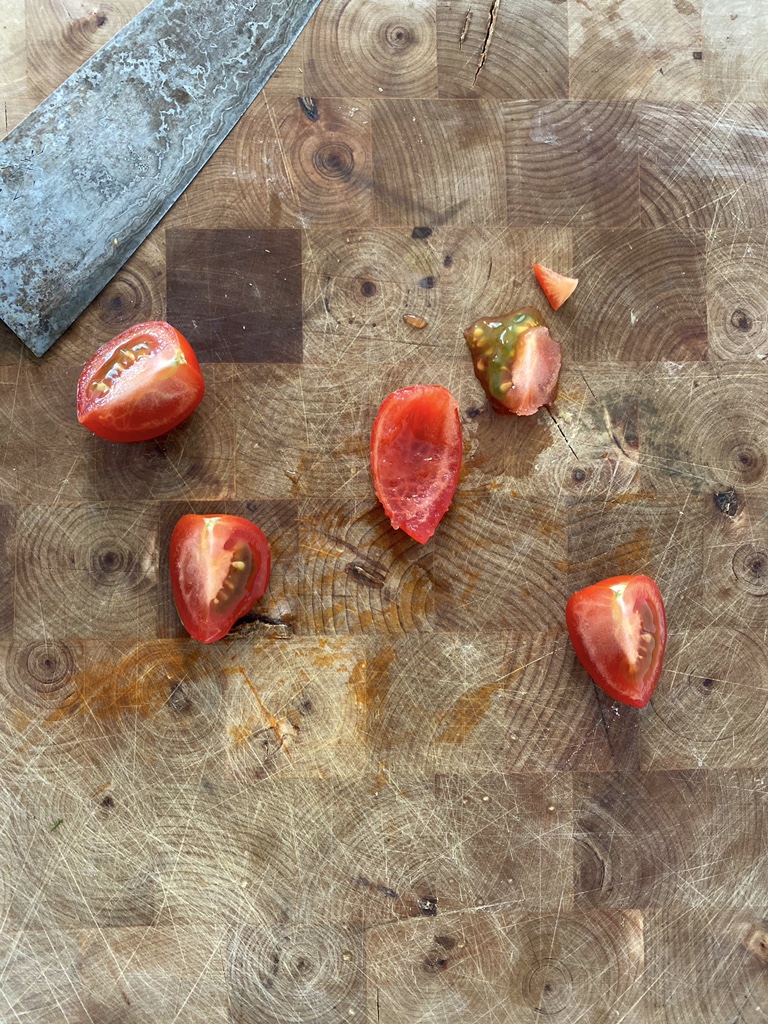
Cut off the bottom end of the garlic clove. Lay the blade of your knife flat on it and strike it once with your fist. The skin will pop open, and you can easily pull it off with your fingers.
You will quickly get a sense for the right amount of force. If you made garlic mash, it was too much.
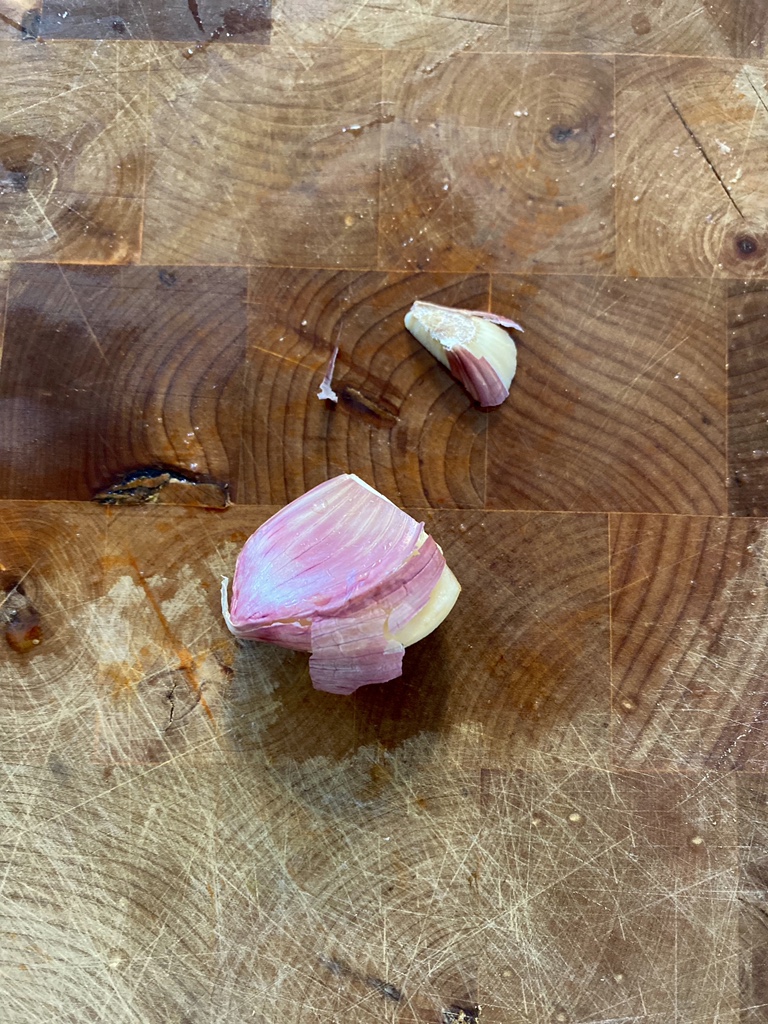
Peeling ginger with a knife can be difficult because of its shape and you cut off a lot unnecessarily. It is much easier with a teaspoon. Simply scrape off the skin.
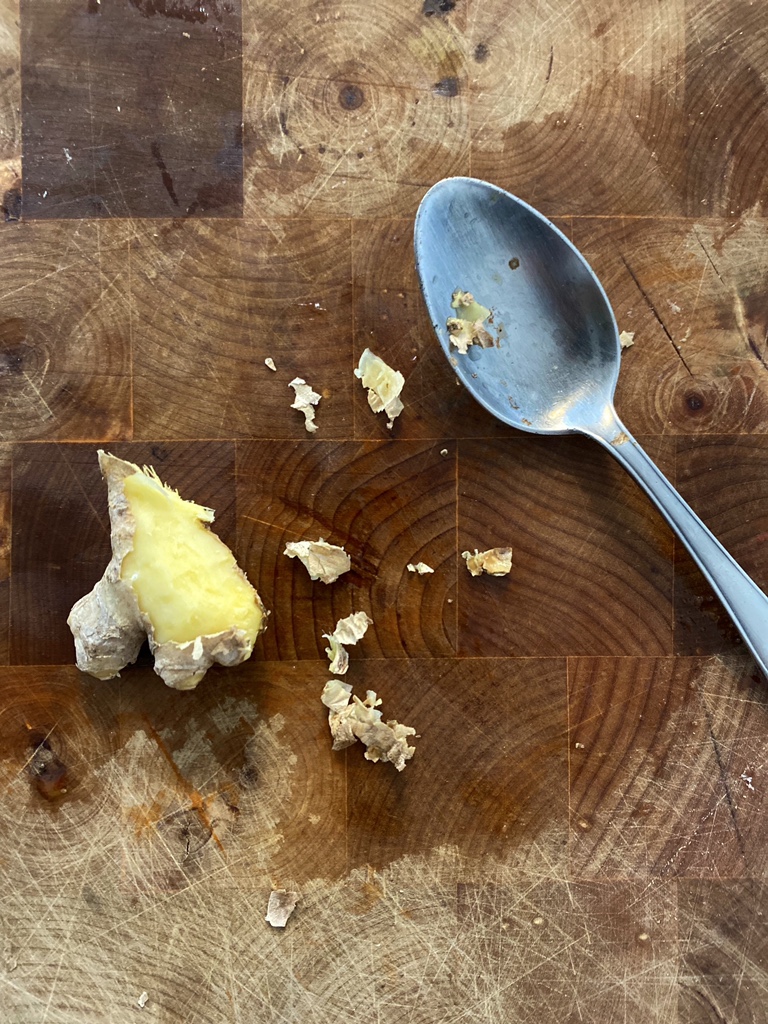
Now you can finely chop the garlic and ginger.
We prefer to grind both into a paste.
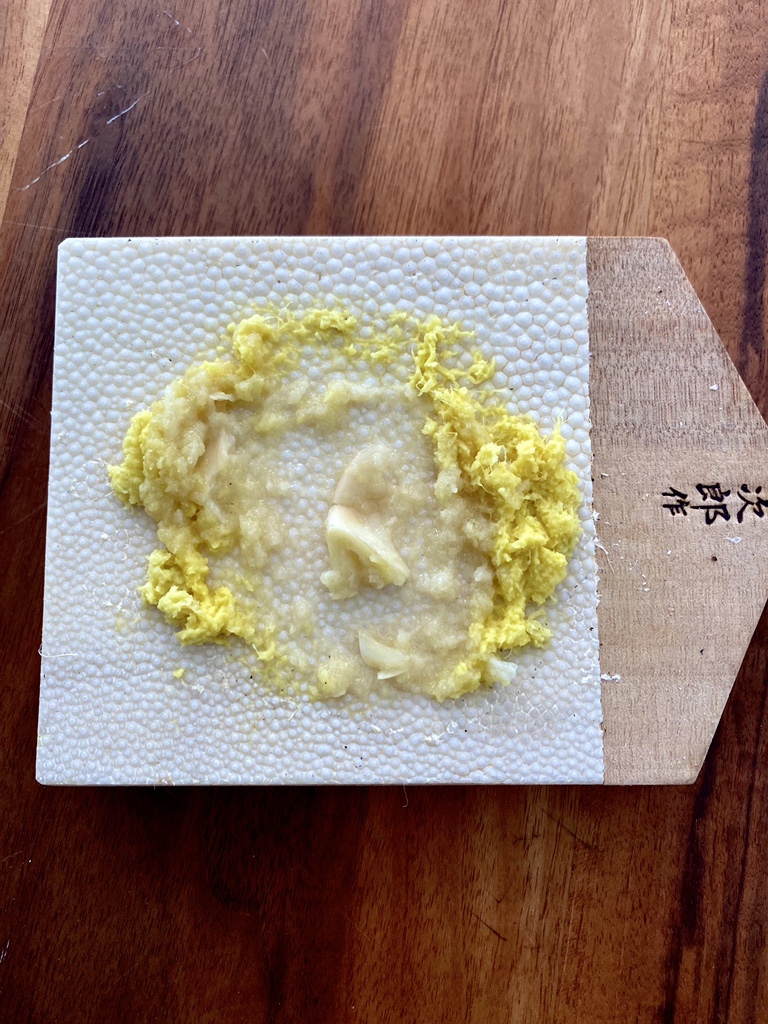
You can also buy Indian ginger garlic paste, but we like to avoid convenience products.
It just keeps getting prettier!
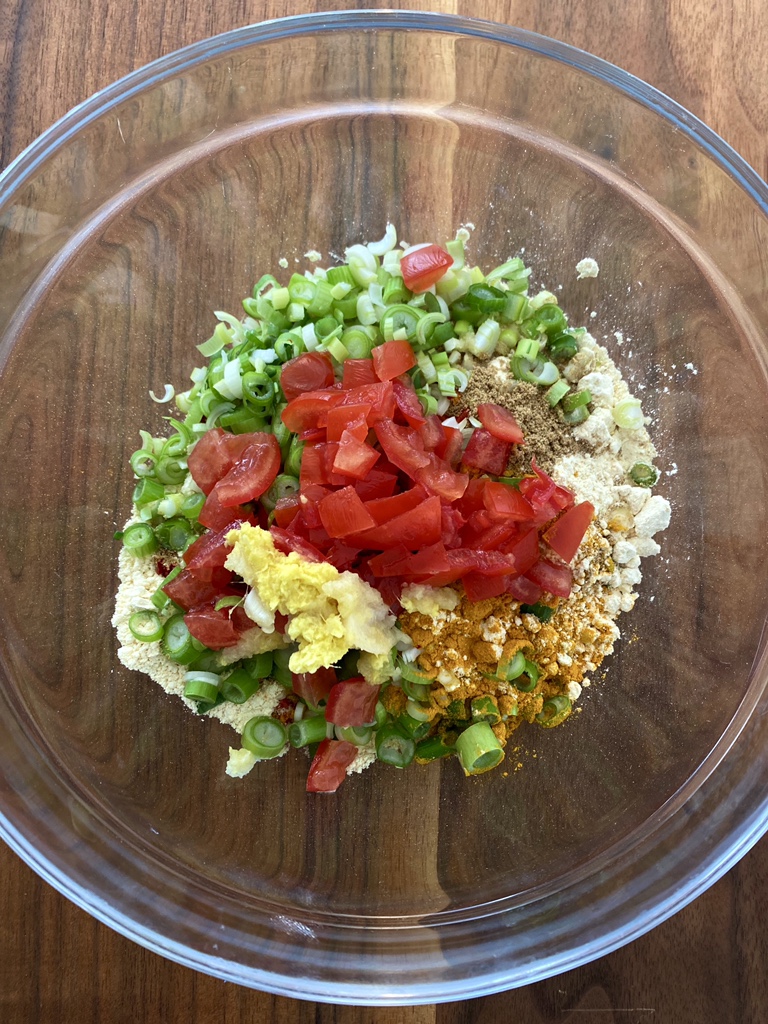
Now add around 240 g of water.
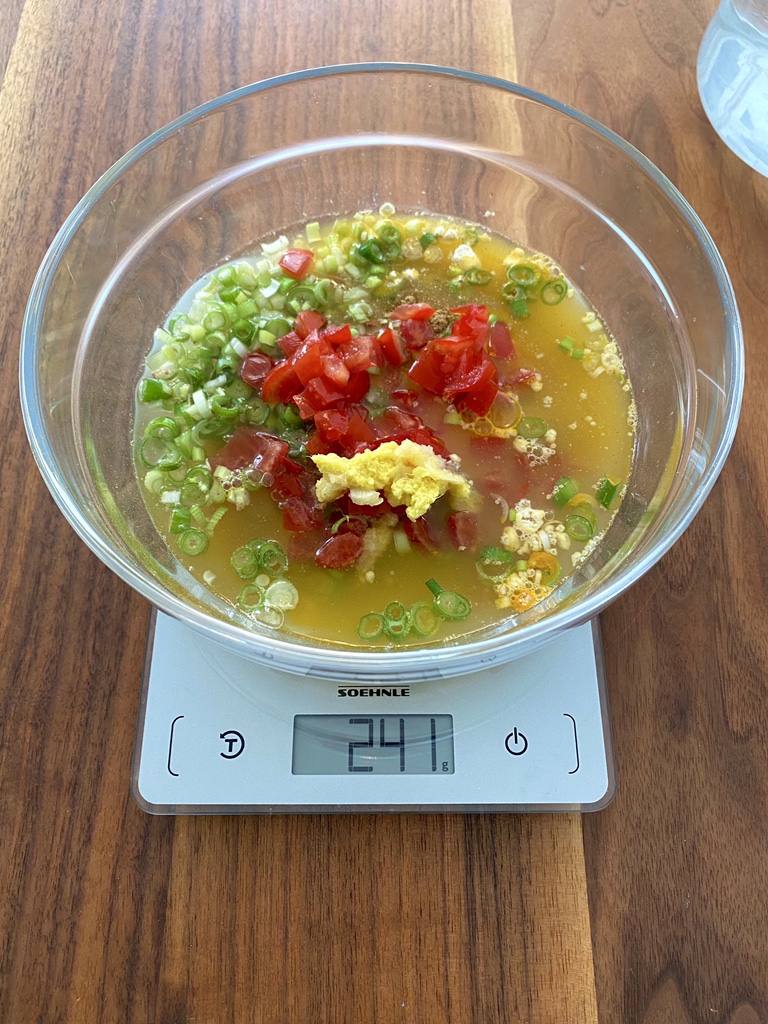
It is often said that you should add it slowly, otherwise it would become lumpy. But we cannot confirm this. Just don’t leave it like this for long but stir it straight away with a fork.
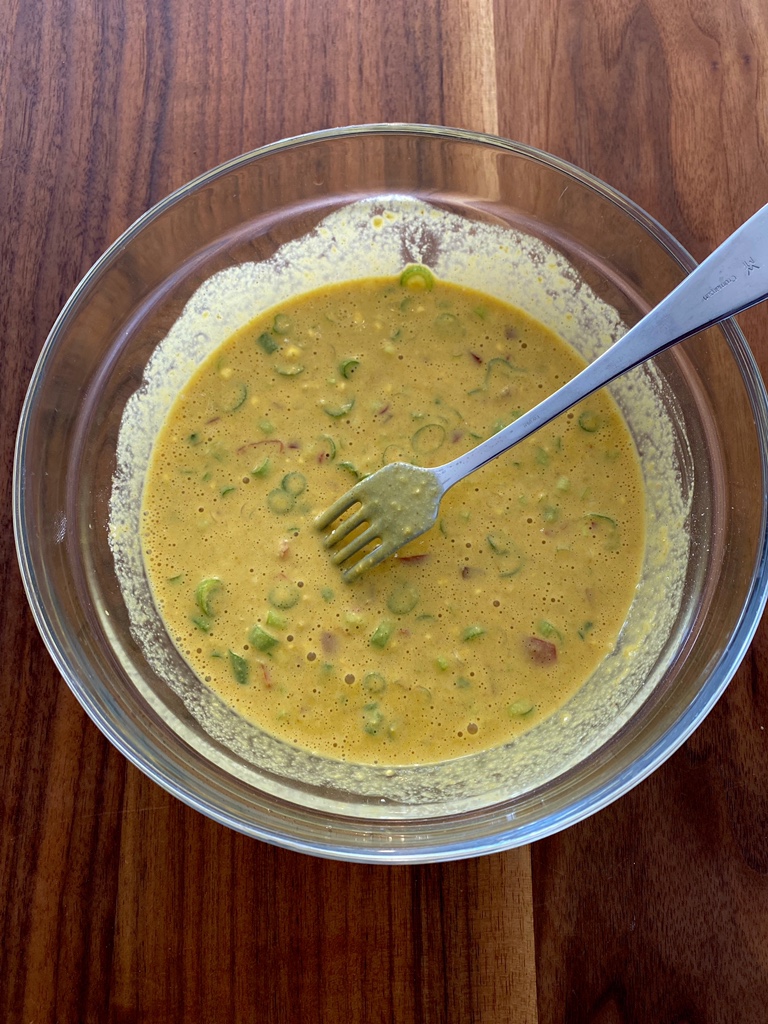
Cover it with a plate and let it rest for at least 10 minutes so that the flour and water can do their thing. We even give it 20 minutes.
Now heat a non-stick pan over medium-high heat. Add a neutral oil of your choice. It does not need much. We stick to Indian cuisine and use “ghee”, which is clarified butter.
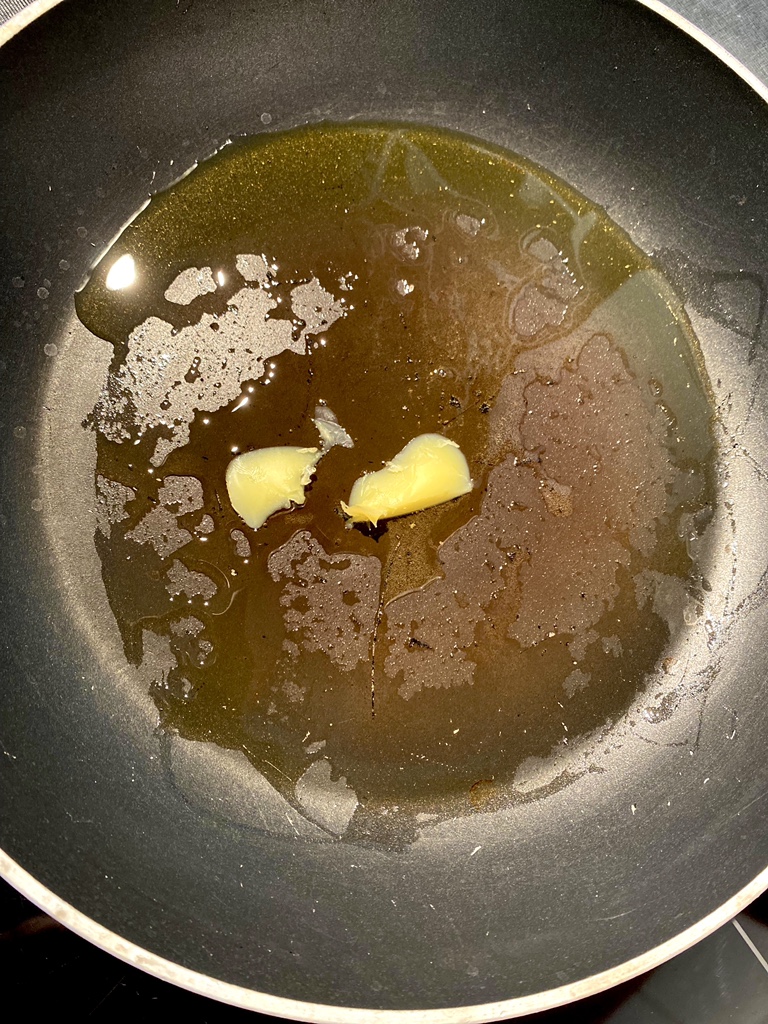
Pour half the amount of your batter into the pan, lift it up and gently circle it so that everything is well spread out.
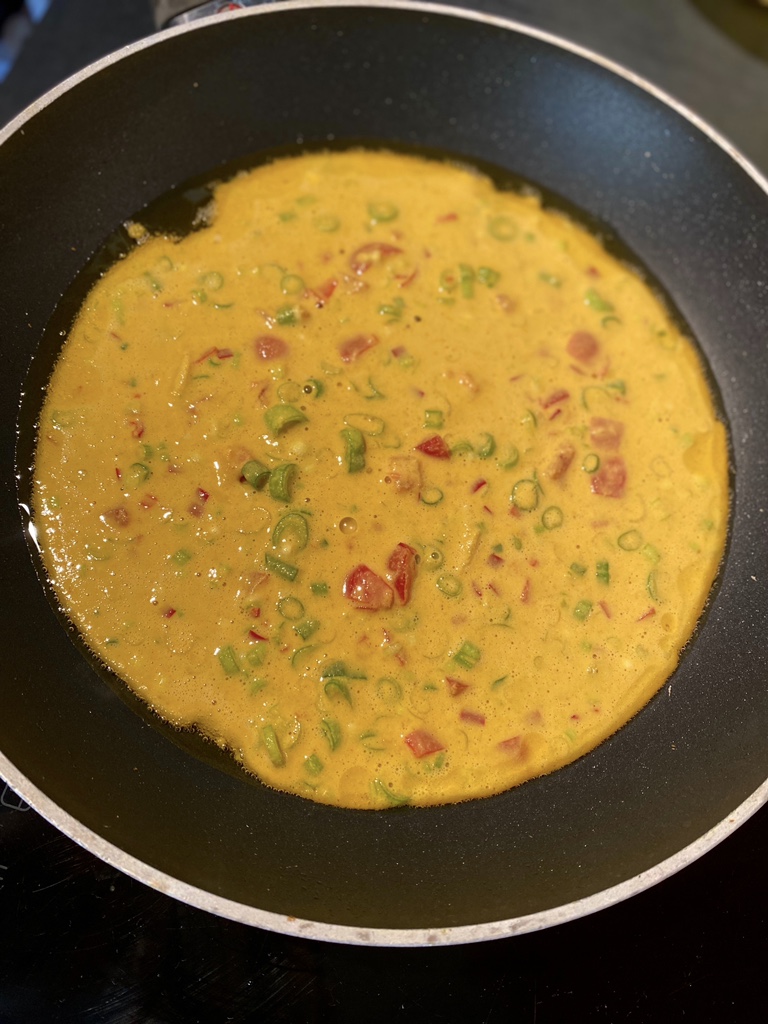
Now let it cook gently until the surface starts to become slightly dry.
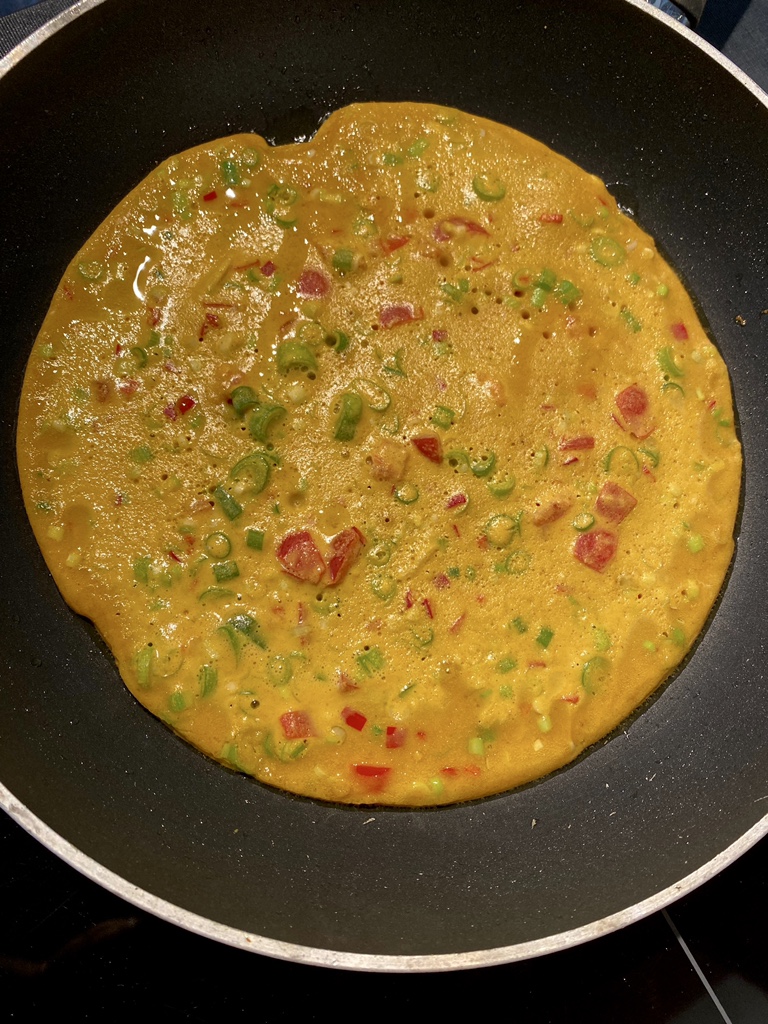
The dough is quite firm. You can lift it with a spatula and turn it over.
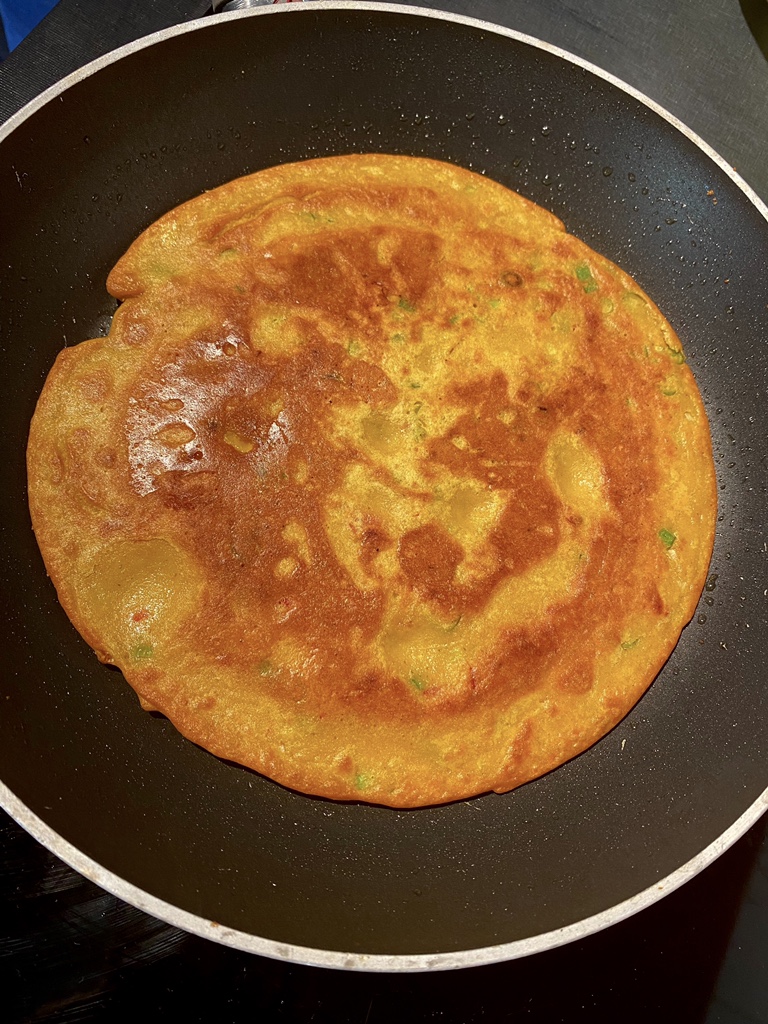
Lift the pancake from time to time with the spatula to see how far it is cooked.
And we are ready to serve!
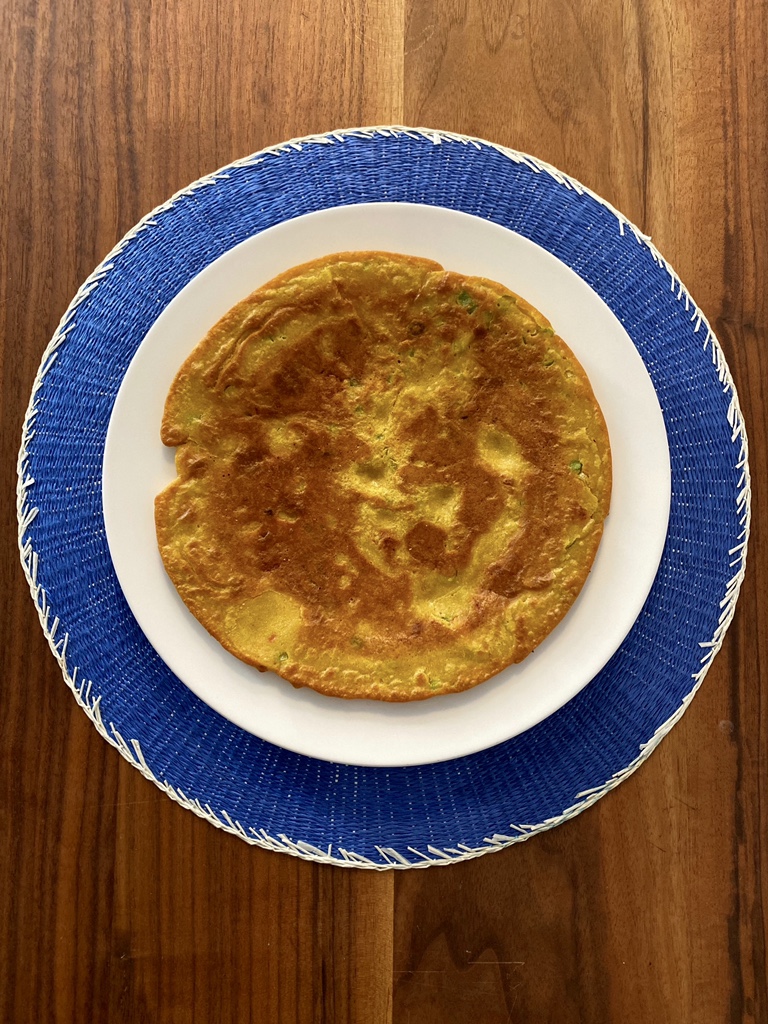
You can combine this with many things. Raw vegetables, yoghurt – and for the NextGens: ketchup! No kidding, we’ve even seen that in India. Just add freshness and other (soft) textures of your liking.
Enjoy.
And may the taste be with you.
Ingredients (for two pudas):
160 g Gram Flour
240 g Water
Ginger, garlic, red or green chili to taste
Vegetables of your choice
(e.g. spring onions, onions, tomatoes, mushrooms – just keep in mind that some vegetables need more cooking time than the puda and therefore should be finely shredded or pre-cooked)
Vegetable oil or ghee / clarified butter
1 Tsp. Salt
Spices to taste
(salt, ground turmeric, cumin, coriander, Kashmiri chili, Garam Masala…)
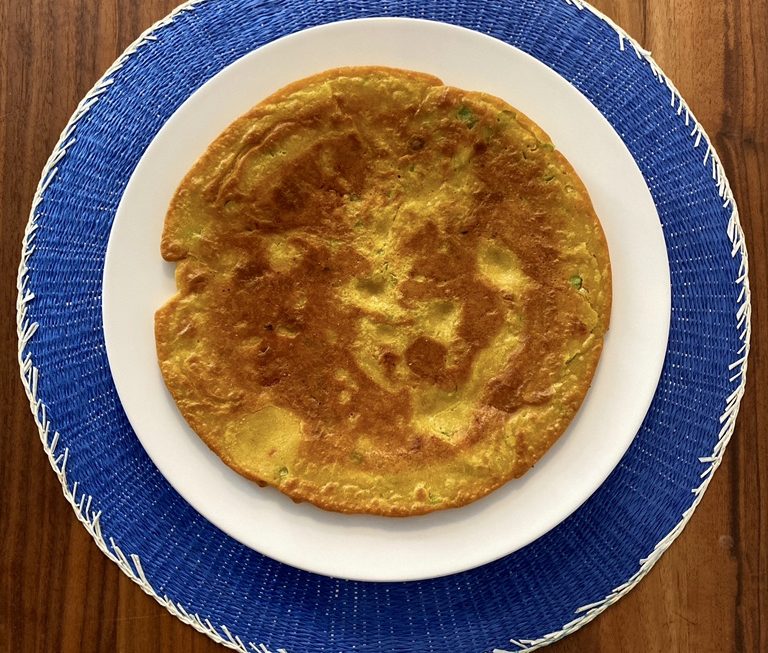

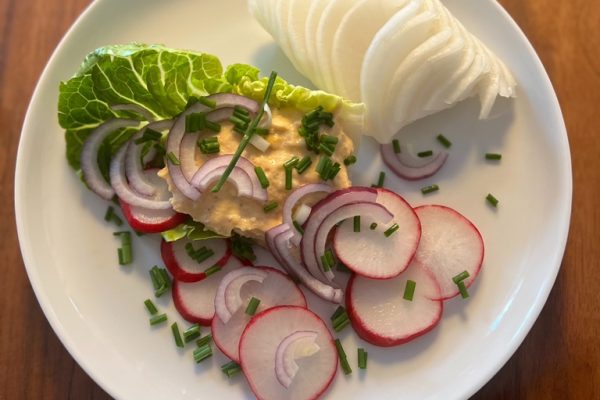
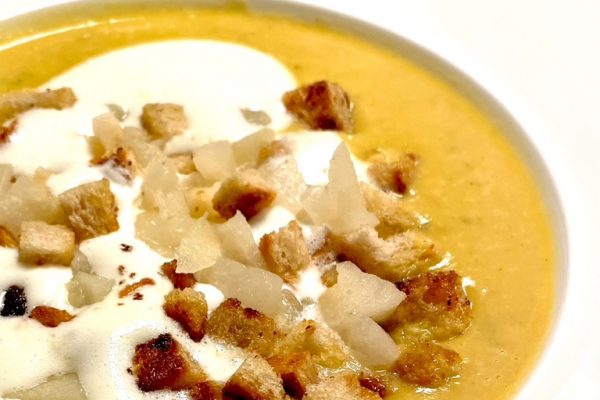
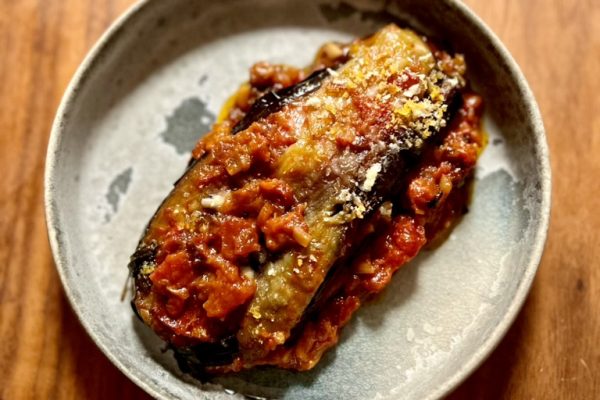
Sounds all so good! Will try this!